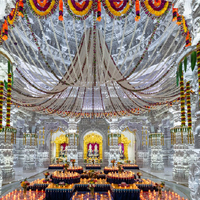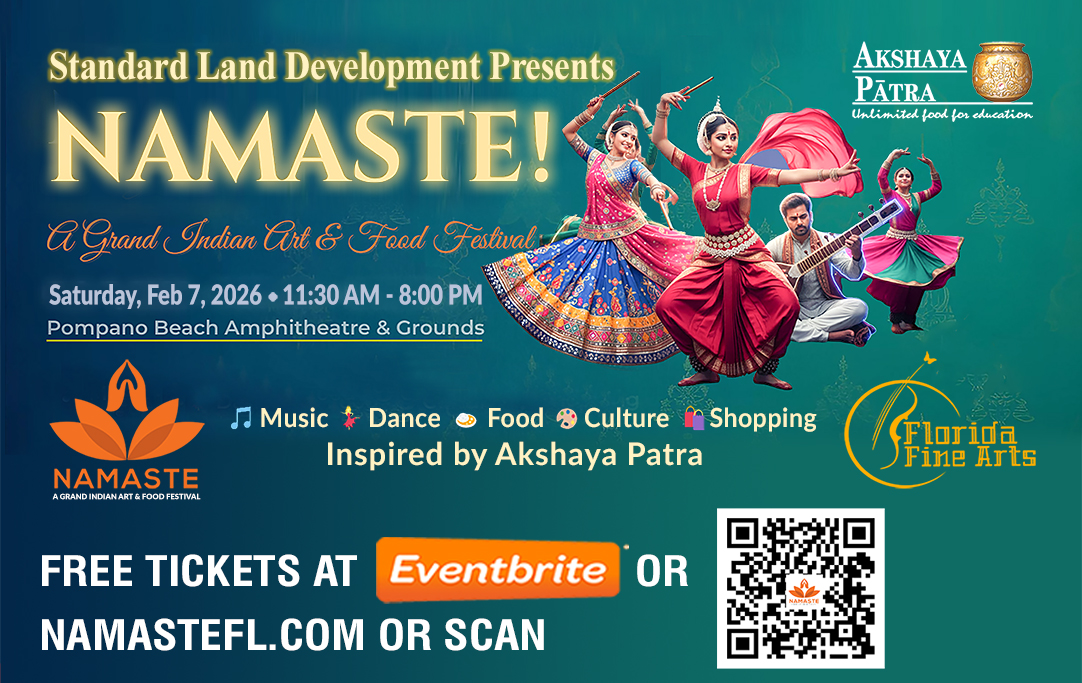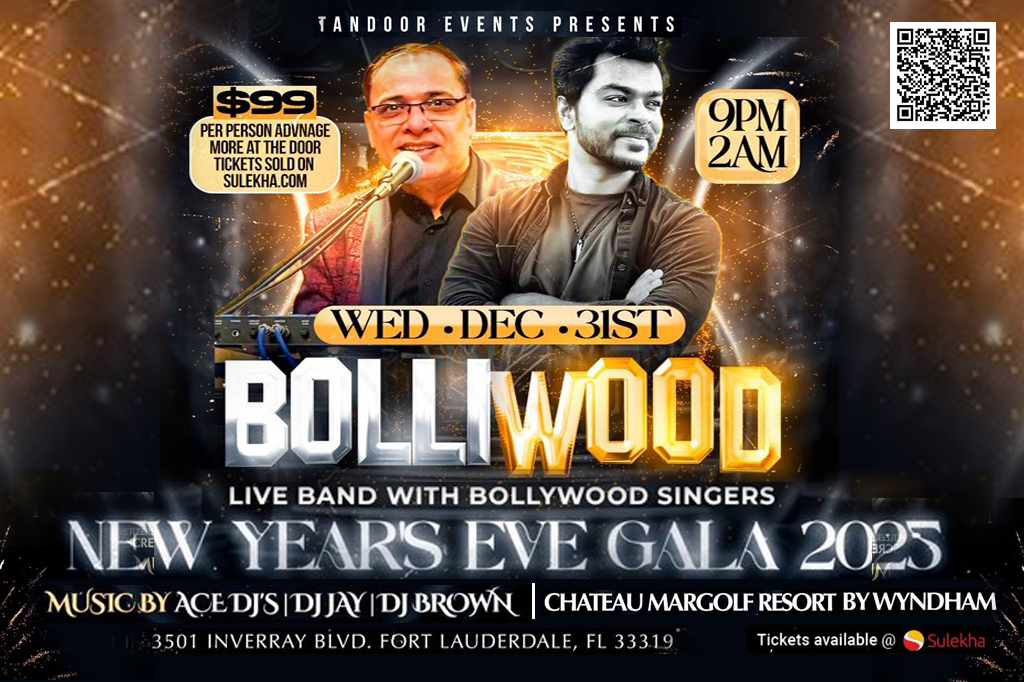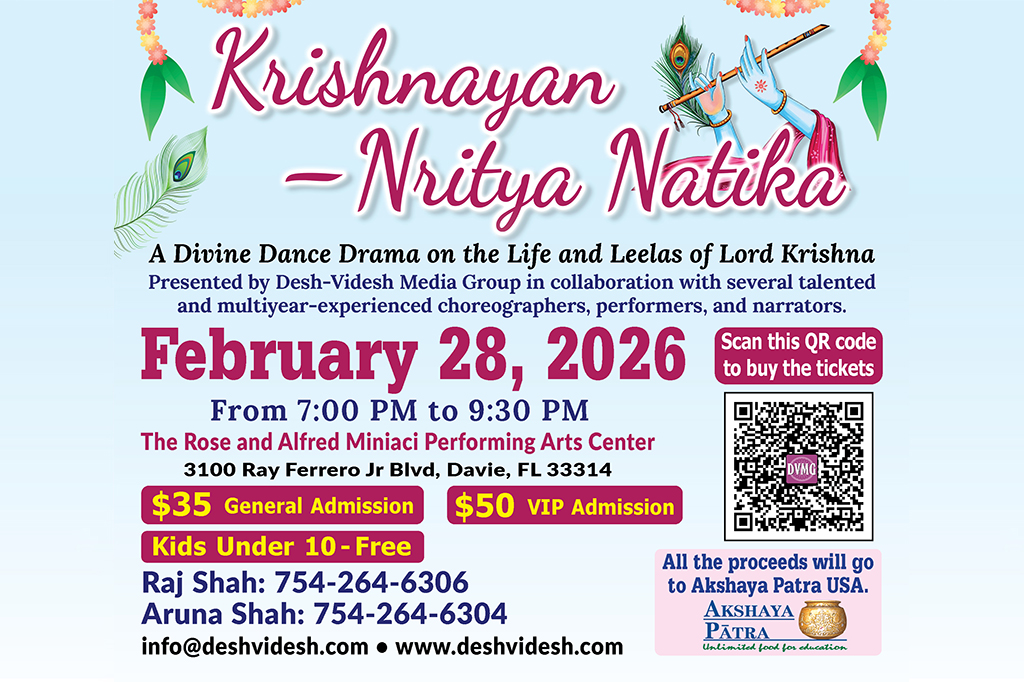Celebrating Diwali in the U.S.
By Raj Shah
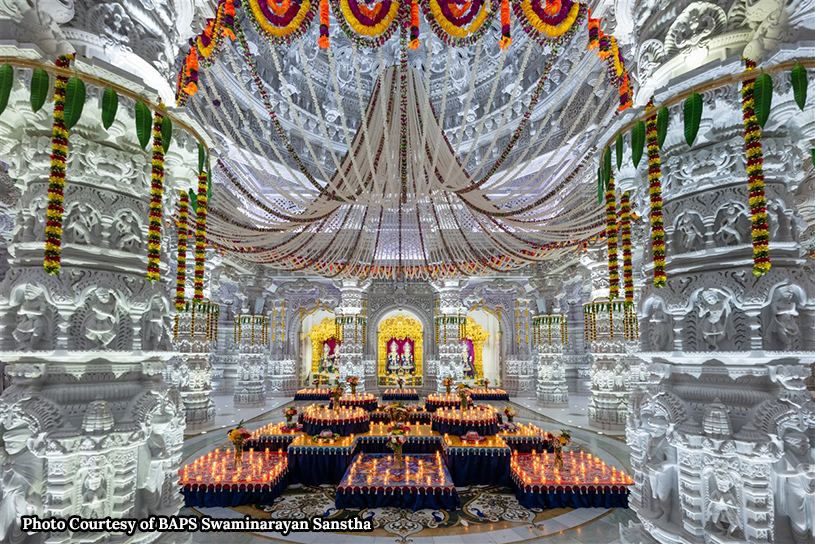
Diwali, or Deepavali, the ‘Festival of Lights,’ is one of the most vibrant, widely celebrated, and culturally significant festivals in India and among the Hindu, Sikh, Jain, and some Buddhist communities across the globe.Traditionally marking the triumph of light over darkness, good over evil, and knowledge over ignorance, Diwali is a five-day extravaganza of spiritual reflection, grand feasts, new beginnings, and dazzling illuminations. In the United States, this ancient festival has transcended its origins to become a powerful symbol of the rich, multi-hued tapestry of American diversity. Celebrated by a large and influential Indian-American diaspora, Diwali in the U.S. is not merely a private religious observation; it has evolved into a public phenomenon, weaving its light into the national cultural fabric, gaining official recognition, and fostering a unique sense of community and connection.
Diwali’s Spiritual Significance and Ancient Roots
The spiritual core of Diwali is profound and multifold. “For Hindus, the central narrative often revolves around the return of Lord Rama, Sita, Lakshmana, and Hanuman to Ayodhya after a 14-year exile and the defeat of the demon king Ravana.” The lighting of diyas (oil lamps) symbolizes the jubilant welcome and the victory of Dharma (righteousness). Other traditions honor the goddess Lakshmi, the deity of wealth and prosperity, by performing puja (worship) to invite her blessings for the coming year. Jains celebrate it as the day of Mahavira’s moksha (liberation), while Sikhs mark it as Bandi Chhor Divas, the day Guru Hargobind was released from prison. Irrespective of the specific theological focus, the universal theme remains the same: the cleansing of the mind and the lighting of the inner self with knowledge and goodness. It is a time for introspection, renewal of commitment to family and community values, and charitable giving.
The Journey of Diwali to the United States
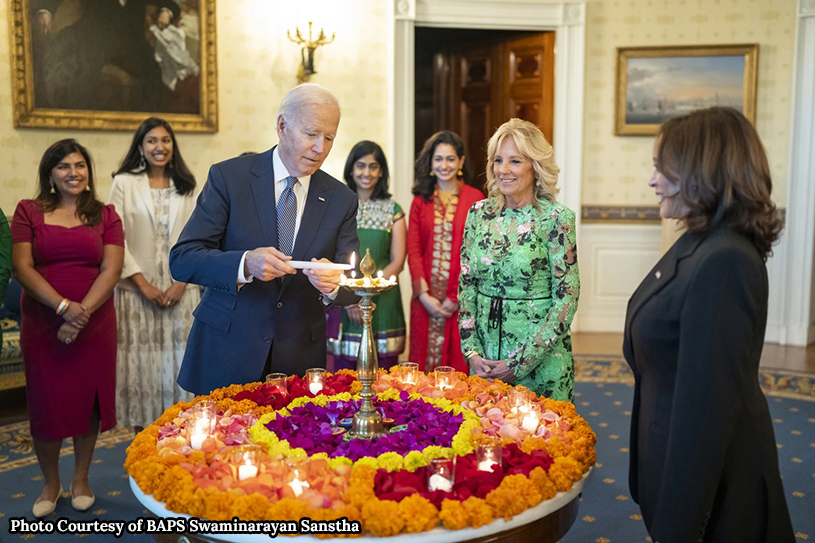 The celebration of Diwali began its formal journey to the United States in earnest following the 1965 Immigration and Nationality Act, which opened the doors to skilled professionals from India. As the Indian-American population grew exponentially—now one of the largest Asian immigrant groups—so did the visibility and scale of their cultural observances. The first-generation immigrants brought with them not only their skills but also their deep-rooted traditions, determined to preserve their cultural heritage in a new land. Initially, celebrations were small, often confined to living rooms or limited community halls. Over decades, as the community flourished and established itself socially, economically, and politically, Diwali moved from the periphery to the mainstream, mirroring the growing influence of the Indian diaspora on American life.
The celebration of Diwali began its formal journey to the United States in earnest following the 1965 Immigration and Nationality Act, which opened the doors to skilled professionals from India. As the Indian-American population grew exponentially—now one of the largest Asian immigrant groups—so did the visibility and scale of their cultural observances. The first-generation immigrants brought with them not only their skills but also their deep-rooted traditions, determined to preserve their cultural heritage in a new land. Initially, celebrations were small, often confined to living rooms or limited community halls. Over decades, as the community flourished and established itself socially, economically, and politically, Diwali moved from the periphery to the mainstream, mirroring the growing influence of the Indian diaspora on American life.
How Indian-American Families Keep Traditions Alive
In the American suburban landscape, Indian-American families meticulously recreate the ambiance of Diwali. Weeks before the festival, homes are thoroughly cleaned, a practice known as ghar ki safai, symbolizing the spiritual purification necessary for the goddess Lakshmi’s arrival. This is followed by elaborate decorating: stringing up bright electric lights, arranging fresh flowers, and creating intricate rangoli (colorful floor patterns) at the entrance. The main day involves the Lakshmi Puja, where the family gathers to offer prayers, often followed by the traditional lighting of diyas and the exchange of gifts and homemade sweets. For many, these family rituals are crucial, serving as a vital link to their ancestry and a mechanism for passing on cultural identity to American-born children.
Community Celebrations: Temples, Cultural Centers, and Gatherings
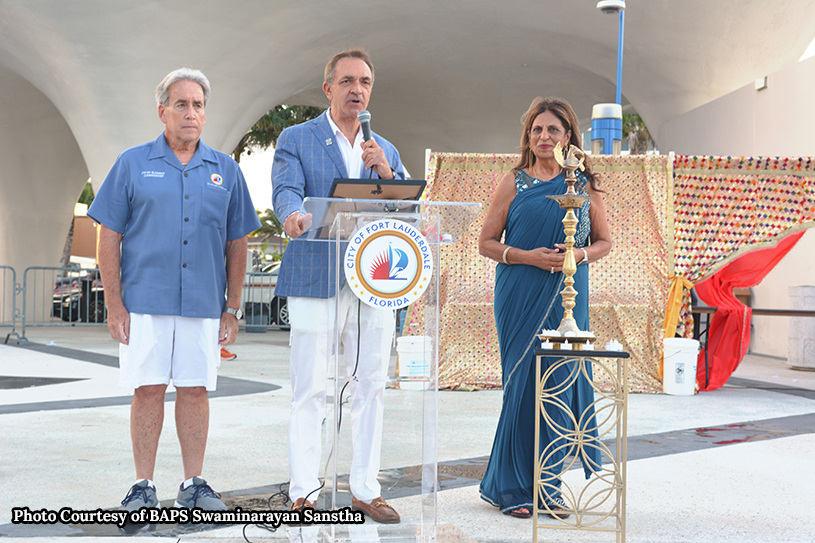 Beyond the family unit, the heartbeat of Diwali in the U.S. is found in vibrant, large-scale community celebrations. “Hindu temples and cultural centers become hubs of activity, hosting elaborate puja ceremonies that draw thousands of attendees”. “These public gatherings, often called Diwali Melas, feature cultural programs, traditional Indian music and dance performances, food stalls offering regional delicacies, and bazaars selling ethnic clothing and handicrafts”. These events serve as crucial platforms for cross-cultural exchange and provide a profound sense of belonging for the diaspora, transforming parking lots and civic centers into temporary, brightly-lit microcosms of India.
Beyond the family unit, the heartbeat of Diwali in the U.S. is found in vibrant, large-scale community celebrations. “Hindu temples and cultural centers become hubs of activity, hosting elaborate puja ceremonies that draw thousands of attendees”. “These public gatherings, often called Diwali Melas, feature cultural programs, traditional Indian music and dance performances, food stalls offering regional delicacies, and bazaars selling ethnic clothing and handicrafts”. These events serve as crucial platforms for cross-cultural exchange and provide a profound sense of belonging for the diaspora, transforming parking lots and civic centers into temporary, brightly-lit microcosms of India.
Lighting Diyas in a New Land: Symbolism and Adaptations
The simple act of lighting a clay diya or lamp carries enormous symbolic weight during Diwali. In the U.S., while traditional diyas are widely used, adaptations have naturally emerged. Electric lights and LED strings often supplement or replace the traditional lamps, offering a more convenient and fire-safe way to illuminate homes in modern structures. The practice of lighting has also expanded to include public spaces. From the windows of suburban homes to the marquees of community halls, the radiant glow serves as a visible, collective statement of hope, peace, and the enduring power of inner light against external challenges.
Food, Sweets, and the Joy of Sharing
Diwali is synonymous with a magnificent feast, and in America, the culinary preparations are paramount. The festival demands a plethora of savory snacks (namkeen) and rich, labor-intensive sweets (mithai) like laddoos, jalebis, gulab jamun, and barfi. Preparing these delicacies is a shared, multi-generational activity. The joy of Diwali is expressed through the ritualistic exchange of these sweets with friends, family, and neighbors—a tangible act of goodwill and spreading prosperity. This culinary exchange often becomes a point of cultural pride, with home-cooked Indian sweets and meals being introduced to non-Indian friends and colleagues.
Diwali Fashion and Traditional Attire in America
Dressing in new, traditional attire is an essential part of the Diwali festivities, symbolizing a new beginning. In the U.S., the celebration is a chance for Indian-Americans to showcase the exquisite artistry of their heritage. Women don vibrant sarees, lehengas, and salwar kameez, often adorned with intricate embroidery and mirror-work. Men wear elegant kurta-pajamas or sherwanis. This fashion parade extends beyond family homes to the community melas, where the vibrant colors and traditional textiles stand out against the backdrop of contemporary America, acting as a visual celebration of their identity. The demand for these clothes has even spurred a thriving niche market of Indian boutiques and online retailers across major metropolitan areas.
Youth and Second-Generation Perspectives

For the second and third generations of Indian-Americans, Diwali holds a unique duality. While they embrace the festival with enthusiasm, their experience is often a blend of inherited tradition and American influence. For some, it is the only time they fully immerse themselves in Indian language, food, and culture. They navigate the challenge of reconciling a traditional Indian holiday with their school and work schedules. Many youth are actively involved in modernizing the celebrations, using social media to share the festival’s meaning and hosting “fusion” parties, ensuring the tradition remains relevant in their American context. They are the future custodians, finding creative ways to keep the light alive.
Diwali Celebrated in the White House
“The celebration of Diwali in the White House is perhaps the most prominent symbol of the festival’s ascent in American public life.” The tradition, which began during the George W. Bush administration in 2003 with ceremonial lighting in the Indian Treaty Room, was later significantly elevated. President Barack Obama became the first president to personally light a diya in the East Room in 2009, making the commitment a presidential one. Subsequent administrations, including that of Donald Trump, continued the practice.President Joe Biden and Vice President Kamala Harris have hosted the largest and most elaborate Diwali receptions to date, drawing hundreds of Indian-American and South Asian community leaders, diplomats, and administration officials. These receptions typically feature remarks from the President and First Lady acknowledging the profound contributions of the community, cultural performances, and the ceremonial lighting of the lamp. The White House Diwali celebration is a powerful, visual affirmation that the ‘Festival of Lights’ is an integral part of the American experience, symbolizing the nation’s embrace of a diverse religious and cultural landscape. This annual event sends a clear message of inclusion and recognition from the highest office in the land, underscoring the festival’s status as a celebrated American holiday.
Diwali in U.S. Universities: A Festival of Light on Campus
On campuses across America, Diwali has become a vibrant celebration of culture, faith, and community. In Florida, universities such as the University of Florida (UF) in Gainesville and the University of Central Florida (UCF) in Orlando host lively Diwali nights organized by Indian Student Associations. These events typically feature rangoli competitions, Bollywood dance performances, bhajans, and a community dinner where Indian food is shared with students of all backgrounds. At UF, the annual “Diwali Show” fills large auditoriums with hundreds of students, while UCF’s Indian Student Association coordinates cultural showcases and fireworks displays that often attract local community members as well. In Miami, Florida International University (FIU) celebrates Diwali with campus gatherings that blend traditional pujas with student-led music and dance, making it a highlight of the academic year.
In neighboring Georgia, the Georgia Institute of Technology (Georgia Tech) in Atlanta hosts one of the Southeast’s largest collegiate Diwali celebrations. Georgia Tech’s India Club organizes “Diwali Show,” an event attended by thousands, featuring elaborate stage productions, dance competitions, fashion shows, and a feast of Indian food. The University of Georgia (UGA) in Athens also celebrates Diwali annually, with its Indian Student Association welcoming students and faculty to a night of devotional songs, folk dances, and festive sweets.
Together, these celebrations in Florida and Georgia not only provide cultural continuity for Indian-American students but also create opportunities for the wider campus community to learn, enjoy, and participate in the richness of Indian traditions. They reflect how Diwali has become a bridge between cultures, shining brightly in the academic and social life of U.S. universities.
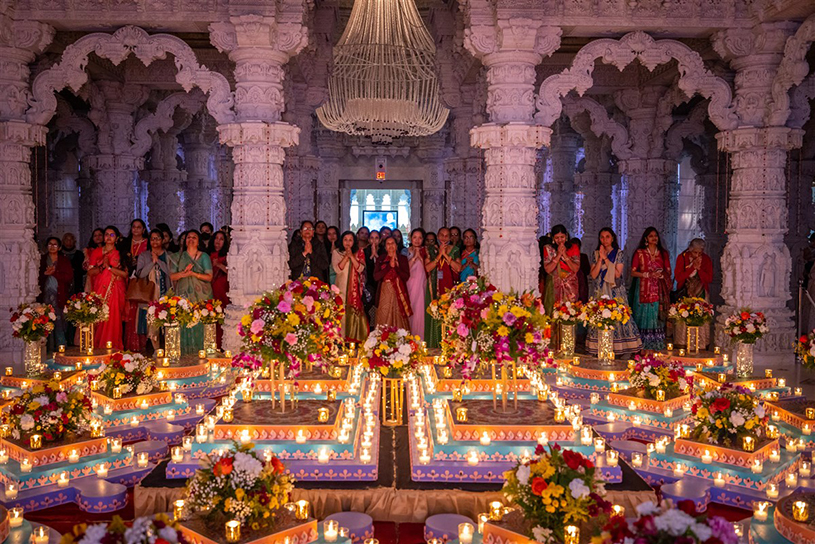
Official Recognition: Holidays, Proclamations, and More
Perhaps the most significant change in recent years has been Diwali’s official recognition across the U.S. In 2024, Pennsylvania became the first state to declare Diwali an official state holiday, followed closely by Connecticut. New York City added Diwali to its public school calendar in 2023, giving nearly a million students a day off. In Florida, Broward County Public Schools approved Diwali as a holiday beginning in October 2025, a milestone for Hindu representation in the South. Counties such as Milwaukee (WI), St. Louis (MO), St. Charles (MO), and Waukesha (WI) have issued proclamations, and dozens of cities—including Naperville, Aurora, Schaumburg, Skokie, Peoria, and St. Louis—have recognized Hindu festivals officially. Florida cities like Altamonte Springs, Palatka, Coral Springs, Tamarac, Parkland, Davie, and Pembroke Pines have also passed proclamations honoring Diwali and Hindu Heritage Month. These acknowledgments highlight the festival’s growing acceptance in American civic life, bridging cultures and validating the traditions of millions of Indian-Americans.
Corporate America Embraces Diwali: Diversity and Inclusion
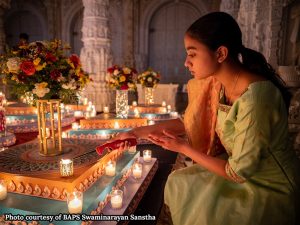 Corporate America has not lagged in recognizing the importance of Diwali. Major multinational companies now regularly organize Diwali events for their employees, complete with Indian food, music, and the lighting of lamps. This embrace is a clear manifestation of diversity and inclusion initiatives, acknowledging the significant contributions of Indian-American employees. It serves to foster a more inclusive workplace environment and validates the cultural identities of their staff. Tech giants like Google and Microsoft lead this trend. Microsoft, for instance, actively supports its Asians at Microsoft Employee Resource Group (ERG), which organizes large-scale Diwali events at its campuses, featuring traditional Indian food, intricate rangoli decorations, diya painting activities, and employees dressed in traditional attire. These celebrations bring a bit of “home” to immigrant employees and share the culture with colleagues from diverse backgrounds. Google often celebrates by launching festive-themed campaigns, like its past “Keep Traditions Alive” campaign that highlighted the diverse ways families celebrate, and through its Google Arts & Culture platform, which offers digital content, games, and lesson plans about Diwali legends and customs. This institutional recognition is a vital component of modern workplace culture.
Corporate America has not lagged in recognizing the importance of Diwali. Major multinational companies now regularly organize Diwali events for their employees, complete with Indian food, music, and the lighting of lamps. This embrace is a clear manifestation of diversity and inclusion initiatives, acknowledging the significant contributions of Indian-American employees. It serves to foster a more inclusive workplace environment and validates the cultural identities of their staff. Tech giants like Google and Microsoft lead this trend. Microsoft, for instance, actively supports its Asians at Microsoft Employee Resource Group (ERG), which organizes large-scale Diwali events at its campuses, featuring traditional Indian food, intricate rangoli decorations, diya painting activities, and employees dressed in traditional attire. These celebrations bring a bit of “home” to immigrant employees and share the culture with colleagues from diverse backgrounds. Google often celebrates by launching festive-themed campaigns, like its past “Keep Traditions Alive” campaign that highlighted the diverse ways families celebrate, and through its Google Arts & Culture platform, which offers digital content, games, and lesson plans about Diwali legends and customs. This institutional recognition is a vital component of modern workplace culture.
Fusion Celebrations: Blending East and West
The American experience of Diwali is often a fascinating study in cultural fusion. Celebrations frequently blend traditional Indian rituals with American social norms. Traditional puja might be followed by a potluck dinner featuring Indian and non-Indian dishes. Indian classical dance and music performances at community events may share the stage with Bollywood-inspired dances. The blending of Indian traditional wear with modern accessories is also common. This fusion is not a dilution of tradition but a dynamic evolution, showcasing the adaptability and vibrant cross-pollination of cultures.
Charity, Seva, and the Spirit of Giving Back
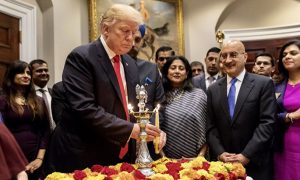 The spirit of seva (selfless service) and charity is integral to Diwali. In the U.S., this manifests through various charitable activities. Many Indian-American organizations and families use the occasion to organize food drives, donate clothes, and raise funds for local and international non-profits. The philosophy of sharing prosperity and caring for the less fortunate ensures that the celebration extends beyond personal festivities, embodying the victory of compassion over indifference.
The spirit of seva (selfless service) and charity is integral to Diwali. In the U.S., this manifests through various charitable activities. Many Indian-American organizations and families use the occasion to organize food drives, donate clothes, and raise funds for local and international non-profits. The philosophy of sharing prosperity and caring for the less fortunate ensures that the celebration extends beyond personal festivities, embodying the victory of compassion over indifference.
Challenges of Celebrating Diwali Abroad
Despite the growing acceptance, celebrating Diwali in the U.S. presents unique challenges. The biggest is the lack of a uniform federal holiday, meaning many families must observe the five-day festival while managing school and work schedules. This often forces them to compress the celebration into a weekend. Furthermore, the distance from India sometimes means a lack of access to specific ingredients, decorations, or the collective, spontaneous atmosphere of a Diwali night in South Asia, necessitating a greater level of planning and coordination.
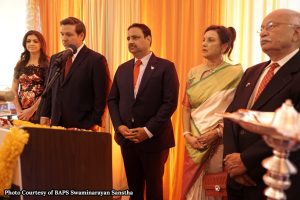 Diwali as a Bridge: Strengthening U.S.–India Cultural Ties
Diwali as a Bridge: Strengthening U.S.–India Cultural Ties
Diwali in America acts as a powerful cultural bridge, reinforcing the bonds between the U.S. and India. The grand-scale celebrations, the involvement of elected officials, and the increasing media coverage serve to normalize Indian culture in the American consciousness. This cultural diplomacy, led by the diaspora, complements the growing strategic and economic partnership between the two nations, providing a warm, human face to the bilateral relationship.
Stories of Non-Indians Who Celebrate Diwali
Diwali’s universal themes of light, hope, and community have drawn non-Indians into the celebration. Neighbors are often invited to puja ceremonies and feasts, and college students participate in campus events. This cross-cultural engagement is organic and heartfelt, as individuals from various backgrounds find common ground in the festival’s message. For many, it offers a window into the rich traditions of their Indian-American friends, leading to a deeper mutual understanding and appreciation that enriches the cultural landscape of America.
BAPS Mandir Celebrations: Annakut—A Grand Display of Devotion
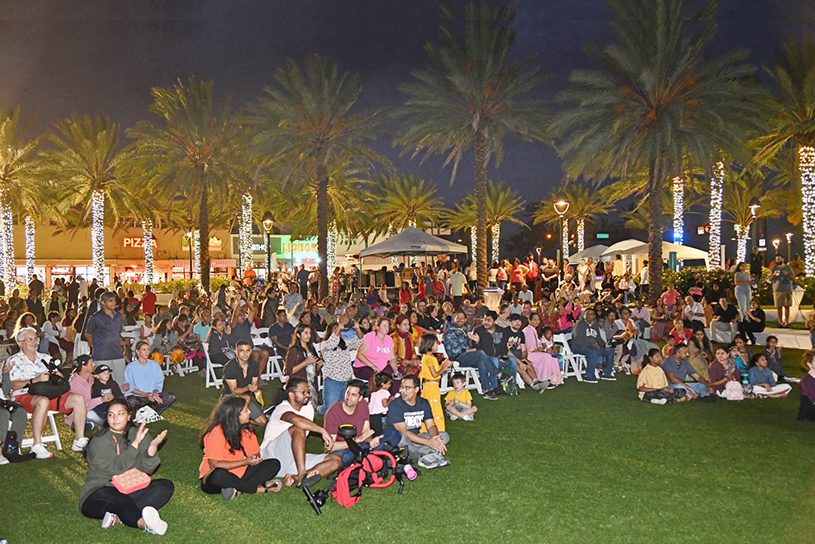 The BAPS (Bochasanwasi Akshar Purushottam Swaminarayan Sanstha) Swaminarayan Mandirs across the U.S., such as those in Robbinsville, New Jersey; Chino Hills, California; and Atlanta, Georgia, are centers for some of the most spectacular and spiritually significant Diwali observances, especially the Annakut festival. Annakut, meaning ‘a mountain of food,’ is celebrated the day after Diwali and marks the start of the Hindu New Year for the Swaminarayan tradition.This celebration is a profound display of gratitude to God, involving volunteers preparing an immense offering of vegetarian food. Typically, hundreds of dedicated volunteers meticulously prepare more than 300 to 400 different food items—ranging from traditional Indian sweets and savories to innovative fusion dishes—all arranged in elaborate, multi-tiered artistic displays before the sacred images of the deities. Throughout the day, thousands of devotees and visitors—often exceeding 3,000 people in the larger Mandirs—attend to view this grand offering, participate in the continuous devotional singing, and witness the arti (a ritual of worship with lamps) performed nearly every hour. The BAPS Annakut is a truly breathtaking event that showcases devotion, unity, and community service on a monumental scale.
The BAPS (Bochasanwasi Akshar Purushottam Swaminarayan Sanstha) Swaminarayan Mandirs across the U.S., such as those in Robbinsville, New Jersey; Chino Hills, California; and Atlanta, Georgia, are centers for some of the most spectacular and spiritually significant Diwali observances, especially the Annakut festival. Annakut, meaning ‘a mountain of food,’ is celebrated the day after Diwali and marks the start of the Hindu New Year for the Swaminarayan tradition.This celebration is a profound display of gratitude to God, involving volunteers preparing an immense offering of vegetarian food. Typically, hundreds of dedicated volunteers meticulously prepare more than 300 to 400 different food items—ranging from traditional Indian sweets and savories to innovative fusion dishes—all arranged in elaborate, multi-tiered artistic displays before the sacred images of the deities. Throughout the day, thousands of devotees and visitors—often exceeding 3,000 people in the larger Mandirs—attend to view this grand offering, participate in the continuous devotional singing, and witness the arti (a ritual of worship with lamps) performed nearly every hour. The BAPS Annakut is a truly breathtaking event that showcases devotion, unity, and community service on a monumental scale.
The Future of Diwali in America: Growing Recognition and Acceptance
The trajectory of Diwali in the U.S. points toward ever-greater recognition and acceptance. As the Indian-American community continues to grow and assume positions of influence in all sectors, the festival’s status will only be cemented. The increasing adoption of Diwali as an official school holiday in districts like New York City and Broward County, Florida, suggests a broader societal shift. The future will see Diwali seamlessly integrated into the national calendar, celebrated not just by the diaspora but embraced by all Americans as a cherished and universal expression of light and hope.
Keeping the Light Alive Across Generations
Diwali in the United States is a powerful testament to the immigrant experience—a story of cultural preservation, adaptation, and integration. It is a vibrant annual reminder that America’s strength lies in its diversity. “From the intimate glow of a diya in a suburban living room to the grand scale of the BAPS Annakut and the official recognition in the White House, the Festival of Lights has found a new, radiant home”. As each generation carries the torch forward, the flames of Diwali will continue to illuminate the American landscape, symbolizing the enduring victory of hope, goodness, and unity for all.
A Historic 75 Seconds: The Story Behind the First Diwali at the White House
By Dr. Piyush Agrawal
Dr. Piyush Agrawal has long been a guiding force and one of the most respected members of our community — and I am proud to say he is also my dear friend, mentor, and trusted advisor. What many may not realize is that the very first Diwali celebration at the White House was not a random gesture of inclusion; it was the direct outcome of Dr. Agrawal’s vision, courage, and tireless advocacy.
In 2003, during a brief private meeting with President George W. Bush, Dr. Agrawal seized a once-in-a-lifetime moment to speak on behalf of over a billion Hindus worldwide. Because of his initiative and determination, Diwali was officially celebrated at the White House for the very first time that year.
Every Diwali celebration held there since then traces back to that historic conversation and his leadership. The honor and recognition our community now enjoys at the highest levels of government is, without question, a legacy of Dr. Piyush Agrawal’s efforts. All credit for opening that door belongs to him.
Raj Shah
Managing Editor
Desh-Videsh Media Group
In 2003, President George W. Bush (43) was traveling across the country for his re-election campaign. During his September stop in Fort Lauderdale, he expressed interest in meeting my son Akhil, who was one of the major fundraisers for his campaign. The President’s office called Akhil to arrange the meeting, but Akhil graciously suggested that the President meet with me instead.
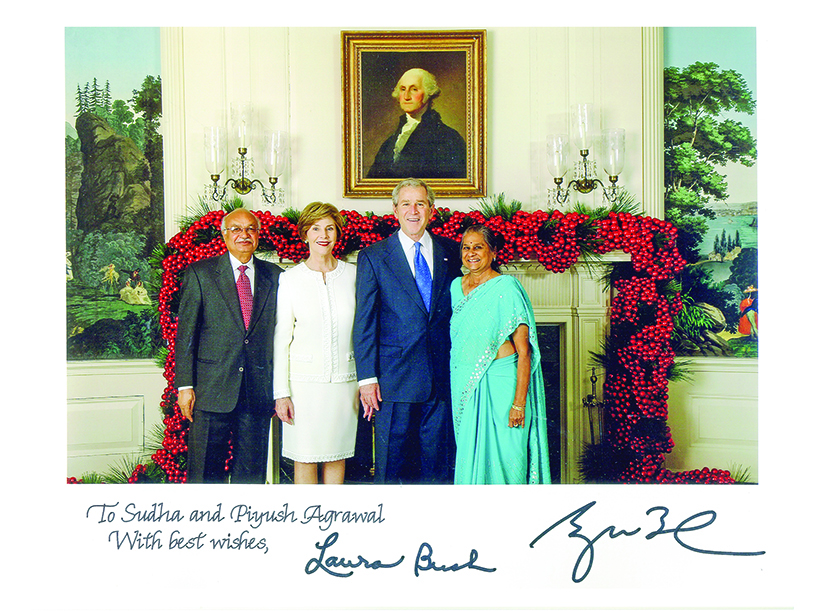 Soon after, the President’s secretary called to schedule the meeting. I politely made one request—I wanted a one-on-one conversation with the President. She said she would confirm with him and call back. Within ten minutes, she returned with approval: I could meet the President privately, but the meeting would be limited to 90 seconds. I accepted, and the date, time, and location were set. Later, the time was trimmed down to 75 seconds.
Soon after, the President’s secretary called to schedule the meeting. I politely made one request—I wanted a one-on-one conversation with the President. She said she would confirm with him and call back. Within ten minutes, she returned with approval: I could meet the President privately, but the meeting would be limited to 90 seconds. I accepted, and the date, time, and location were set. Later, the time was trimmed down to 75 seconds.
I now found myself in a unique position. Meeting the President of the United States face-to-face was a once-in-a-lifetime opportunity, and I wanted to make the most of it. My sons were hoping he would take action against the practice of bundling federal contracts, which would have helped their businesses. My focus, however, was on something with broader benefit to the community: bringing Diwali to the White House.
With only 75 seconds to speak, I knew I couldn’t waste a moment explaining Diwali from scratch. So, I decided to address two key points during the meeting.
First, since 9/11, the President had only mentioned Christians, Jews, and Muslims in his public remarks. I respectfully pointed out that Hindus—numbering over a billion globally—were being left out and asked that he include Hindus going forward. He immediately agreed, and just twenty minutes later, during his Fort Lauderdale speech, he added Hindus by name.
Second, I told him that he celebrated Christmas, Hanukkah, and Kwanzaa at the White House, but not Diwali. He looked at me and asked, “What is Diwali?” I was prepared. Anticipating the time crunch, I had brought a one-page written explanation. I handed it to him and said that if he celebrated Diwali, it would be appreciated by a billion Hindus around the world. He replied that he would look into it, and if he could make a billion people happy, he would do it.
That conversation took place on September 9, 2003. Just six weeks later, on October 23, 2003, Diwali was celebrated at the White House for the very first time.
To commemorate the occasion, I had silver coins minted in India featuring Ganesh and Laxmi. They were airlifted to Washington, D.C., and distributed to all the attendees at the White House event.
That was the beginning of Diwali’s official celebration in the Western world—and soon, other countries followed.

